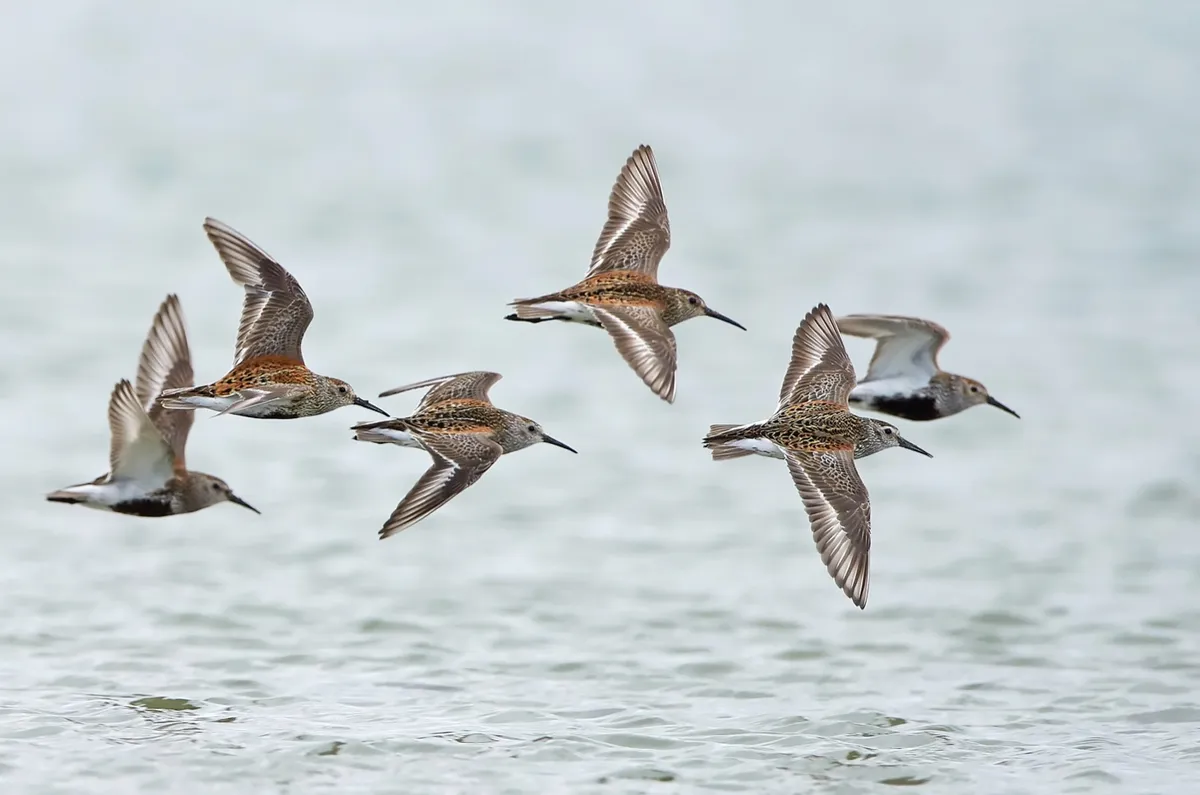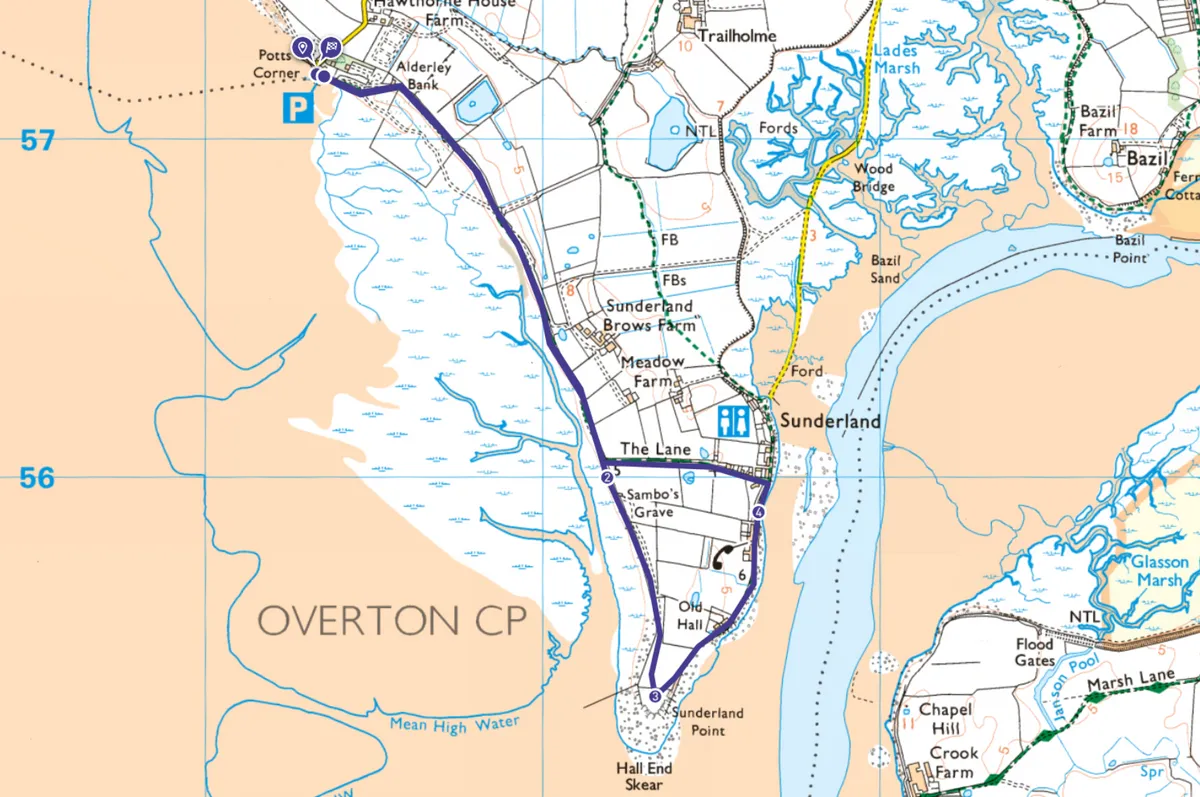Sunderland Point is set at the mouth of the River Lune on the southern shores of Morecambe Bay. It’s a remote and secretive spit of land, surrounded by creeks and marshes.
But with this isolation comes solitude and the chance for nature to thrive.
Explore the shingle, marsh and sombre past of this windswept peninsula on the Lancashire coast on a 3.5-mile circular walk.
Sunderland Point walk
3.1 miles/5km | 2 hours | easy
1. Painting the sky
From the moment you stride out from the car park at Pott’s Corner, you realise that you’re walking in a special place. Looking out across the mudflats at this time of year, you can enjoy one of nature’s great spectacles – swirling flocks of knots and dunlins alternate from dark to light, swerving and changing direction, their movements painting elaborate pictures in the sky.

As many as 50,000 birds feed here – look out for long-legged waders such as bar-tailed godwits and redshanks with their bright-orange legs, often joined by plump shelducks out on the mud. Thousands more birds pass overhead on their migration, while solitary curlews swoop down, their mournful calls mixing with the piping trills of oystercatchers.
2. Worth of heart
This corner of Lancashire was a big part of Britain’s mercantile history – it’s said that the first bale of cotton from the New World arrived at this once-thriving port. Along with mahogany, rum, sugar and molasses, many of the ships also carried slaves.
After roughly half a mile strolling along the shoreline, you’ll come to a tragic reminder of the area’s wretched past. A small enclosure marks Sambo’s Grave, the tombstone of a young African boy and servant to a ship’s captain who, wracked with illness, was set ashore here in 1736. Accounts differ about whether he was taken in by villagers or shunned, but he passed away just four days after he made landfall. The gravestone was added some 60 years later and decrees that God will judge “Not on man’s colour, but his worth of heart.” Flowers and messages are often left beside the grave.
3. Lune wildlife
Reaching the tip of this often-bleak yet mesmerising landscape, you will see the diminutive Plover Scar Lighthouse sitting out in the channel. Built in 1847, the refurbished eight-metre-high building continues to guide ships into the Lune estuary.

Loop north, stopping for a while to watch the swirling waters of the Lune. You may spot porpoise here, and salmon travelling upstream to ancient spawning grounds, while roe deer have even been known to swim across the channel.
In the early 1800s, having lost its key maritime role to the docks at Glasson on the opposite bank, Sunderland reinvented itself as Little Brighton on the Lune. The river became popular with bathers, who sought the medicinal properties of the salt water and the gloopy estuarine mud – all the vogue in those days.
4. Sunderland sunset
A few hundred yards further, you enter Sunderland. Twice a day, the causeway over to the mainland is cut off by the swirling tide, an event that gives the village its name – a land sundered from the main. It is a community of no more than 30 homes with a clutch of listed buildings, but no shop or café. Number two on First Terrace was once the smithy and ropewalk, while next door was the Customs House.
From the village, follow the Lane as it crosses the peninsula, and retrace your steps back north to Potts Corner. With any luck, this marshy wonderland will be bathed in the glow of a perfect autumn sunset.
Sunderland Point map
Sunderland Point walking route and map


